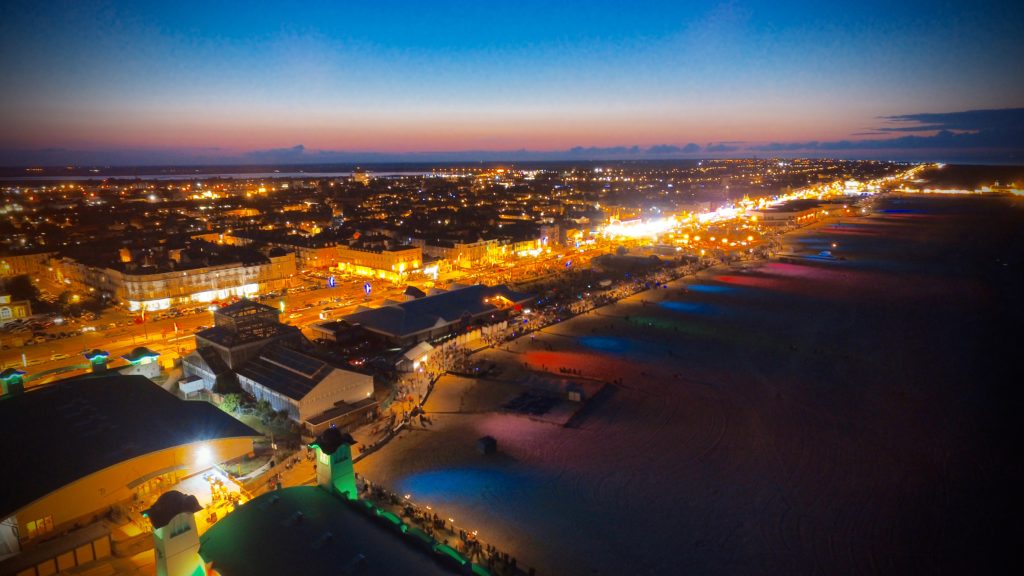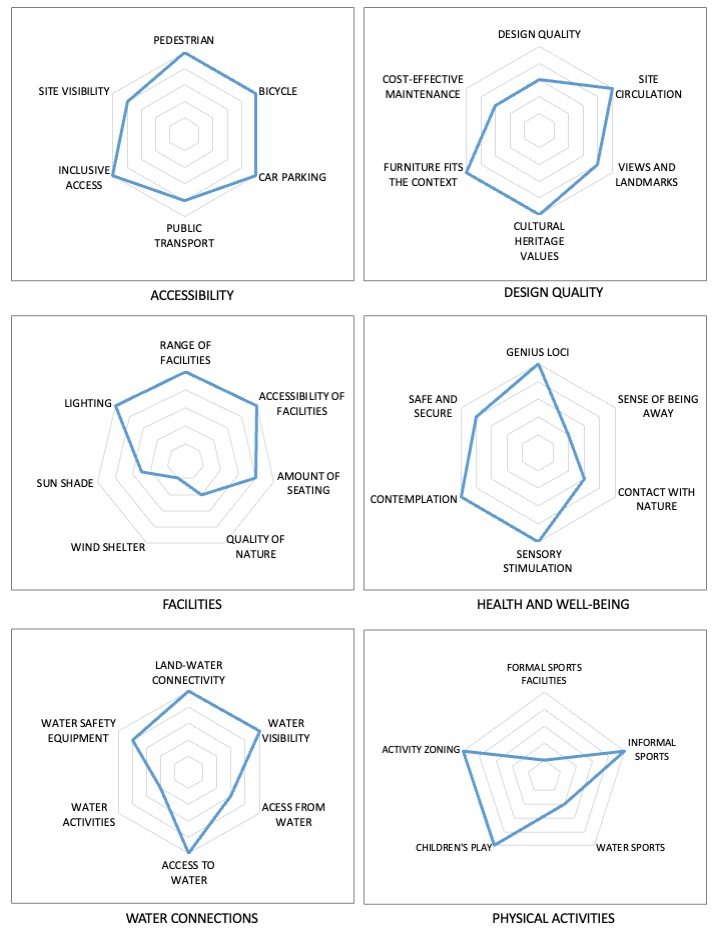
Architect
Esplanade Architects
interGREAT
Martin UK
Type of Area
Sea
Land/water interaction
Sandy beach
Built Environment Types
Completely built
Scale of Impact
District/neighbourhood
City
Regional
Intervention Scale (Spatial)
Linear development – single intervention
Project Types
Seafront development
Economic regeneration
Cultural regeneration
Urban/ Rural
Inner urban area
Visibility and Openness
Fully open
Full horizon
Lighting to Extend the Season
Great Yarmouth has long been one of the leading seaside resorts along the UK’s North Sea coast. It has a sandy beach and an urban core with rich maritime heritage. The aim of this lighting project was to extend the accessibility and attractiveness of the beach beyond the short 6-8 week span of the English summer. The project drew together residents, local business and organisations, into the interGREAT partnership with the goal of redeveloping the beach area. The aim was to offer a safe, more comfortable and dynamic place with improved facilities for residents and visitors, to encourage business growth and improve the popularity of the town. The project is primarily tourism and market driven.
This lighting project specifically emphasised the need for a year-round usable space for visitors that also connected the beach to the town. Through this project, lighting is seen as an integral component of extending the usability of the beach not only for night hours but also to facilitate events and interest outside the traditional summer season. The project included re-construction of the beachfront esplanade with new paving and pedestrian lighting consisting of golden lighting columns with downlights. Each column supports thirty eight ‘wash-lights’ to flood the beach with light in an eve-changing sequence of colour. The design and lighting when seen at night also gives the impression of twinkling decorative sails, reminiscent of the town’s maritime past.
This lighting system is programmable and can be altered day-by-day for every event or concert. The colours are mixable, providing changing colours projected onto the beach. It is also capable of withstanding the ravages of North Sea weather. The project also included creation of a ‘ceiling of lighting’ from the town centre to the sea front thus linking the two. Great Yarmouth has used a dynamic lighting scheme in a bold and dramatic way to extend the tourist season and sustain the local economy. The project also improves pedestrian mobility, safety and gives a distinct identity to the town as well as allowing people to interact with water for longer duration of the day and beyond the tourist season.
Perception and Meaning
Imageability
Sense of place
Place identity
Focal point
Place attachment
Health and Wellbeing
Place affordance
Better environmental perception
Increased physical activities
Increases socialisation
Aesthetic experience
Interaction with Water
Visual
Tactile – fully in water

The project scores highly for accessibility and facilities due to its seaside town location. The level promenade ensures accessibility and the lighting enhances the ability to enjoy the area at night. Beach wheelchairs are also available, thereby improving the inclusive accessibility of the site.
Some seating areas are shaded from the sun, but there is no shelter from the wind, which is understandable on an exposed seafront, but there are plenty of venues for people to shelter if the weather deteriorates, and so this is not a priority in this development.
The project scores low in terms of being away and contact with nature. As a project to extend the use of the promenade for local businesses through the use of lighting it creates an artificial atmosphere. Night-time lighting is also known to affect light-sensitive organisms particularly in water environments and therefore may disturb natural rhythms to some degree. During the day there are beach guards but night-time water activities, such as swimming, are inherently more dangerous due to the lack of visibility in the sea itself and so, understandably, this project scores low for water sports. However, the lighting does improve the accessibility to the beach for children’s play and informal sports, like jogging.
